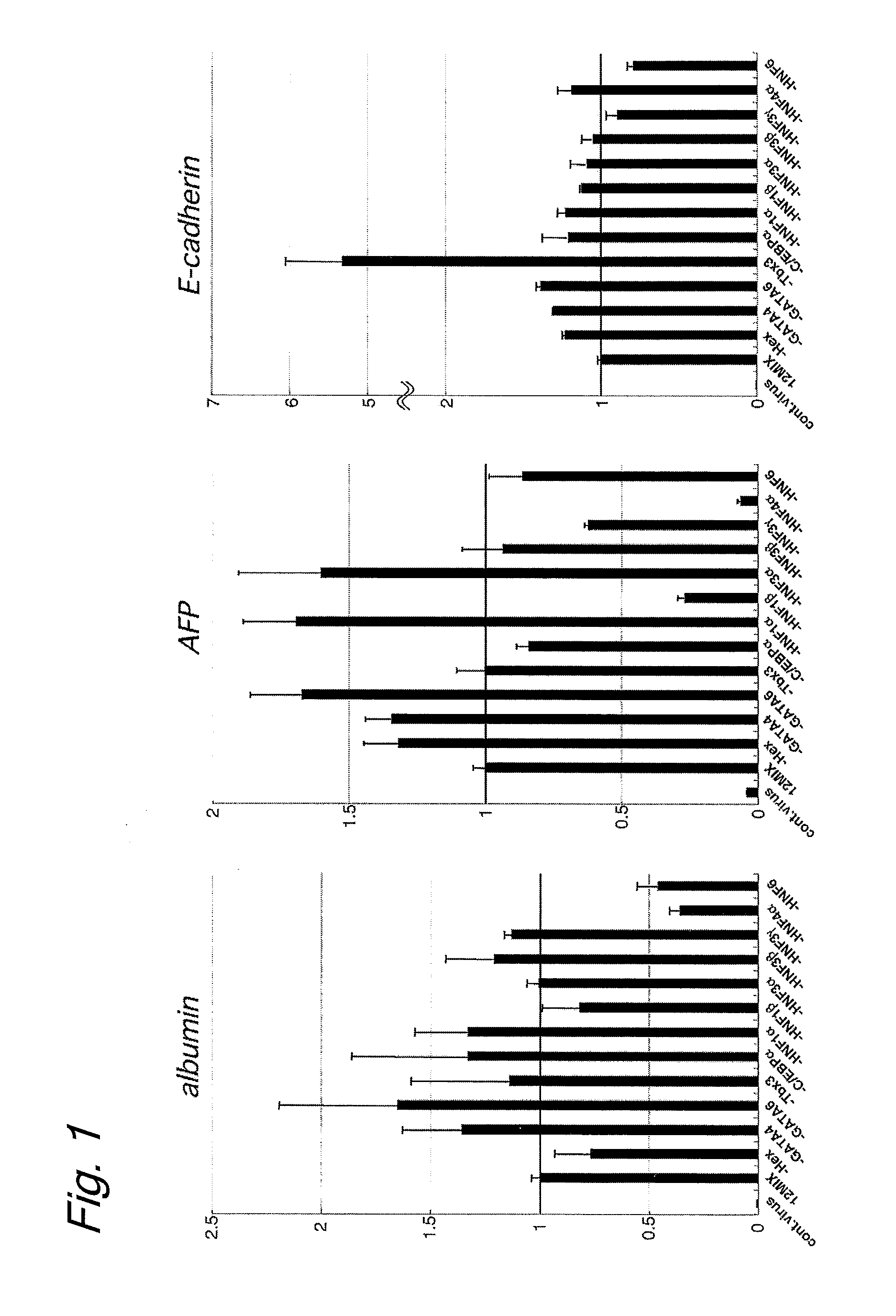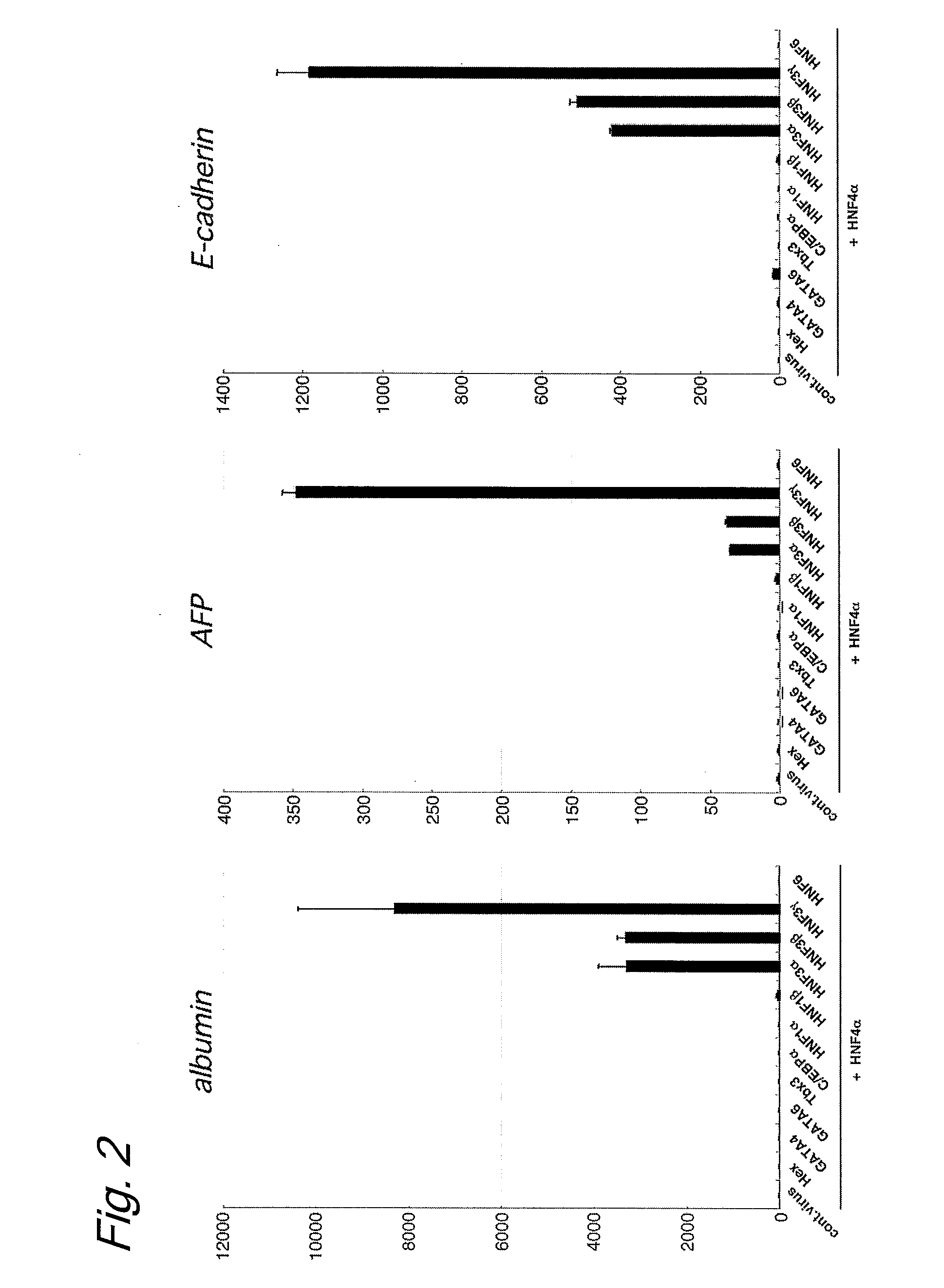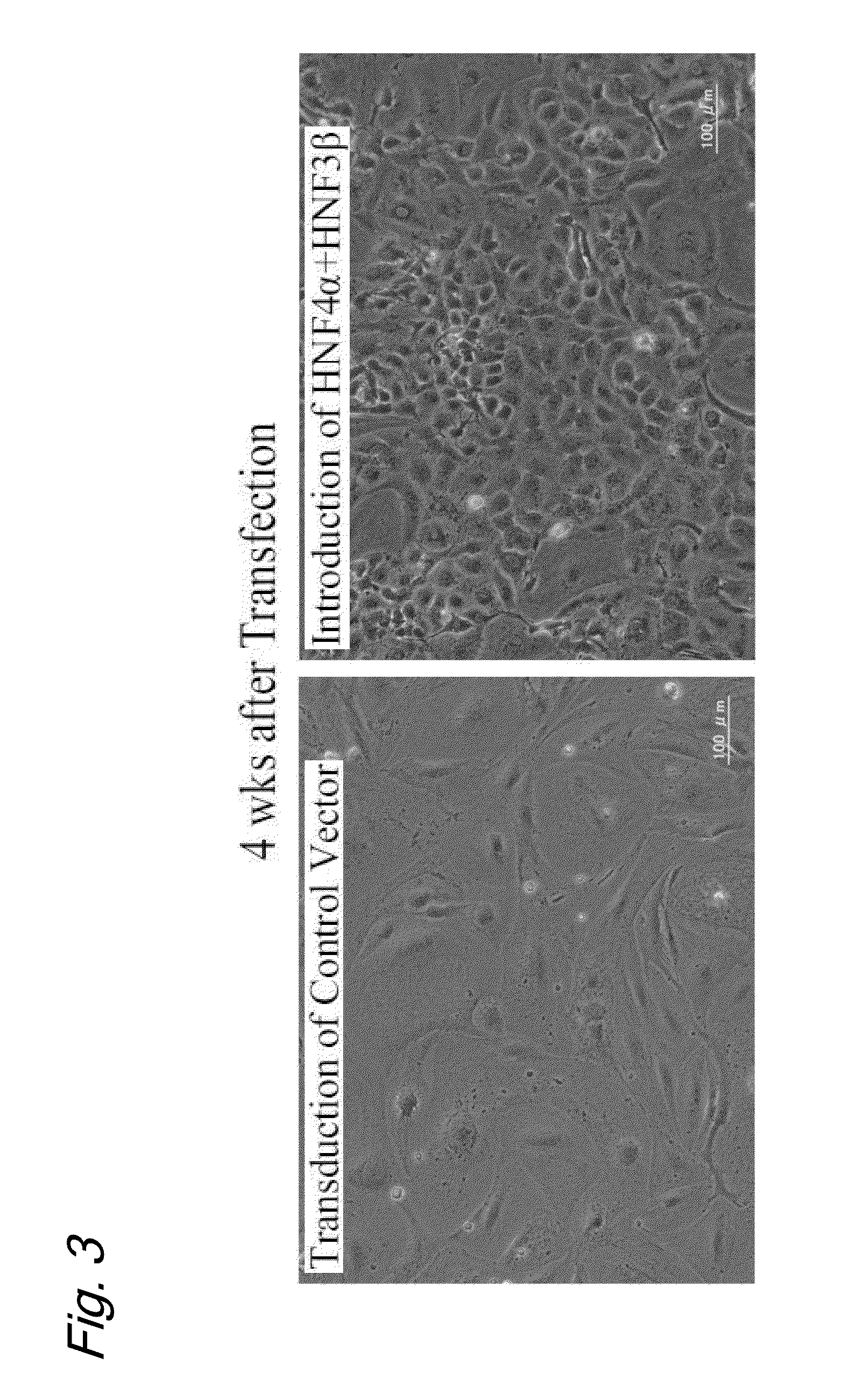Induced hepatocytes
a technology of hepatocytes and hepatocytes, which is applied in the direction of genetically modified cells, skeletal/connective tissue cells, peptide/protein ingredients, etc., can solve the problem of limited number of hepatocytes that can be harvested directly from living tissues, difficult to grow hepatocytes ex vivo, and risk of tumor formation
- Summary
- Abstract
- Description
- Claims
- Application Information
AI Technical Summary
Benefits of technology
Problems solved by technology
Method used
Image
Examples
example 1
Method
[0070]Cell Culture
[0071]Mouse embryonic fibroblasts (MEFs) were obtained from a mouse fetus (C57BL / 6 E13.5) and cultured in a DME medium (Dulbecco's modified Eagle medium) supplemented with 10% fetal bovine serum (FBS), L-glutamine (2 mmol / L), and penicillin / streptomycin. Retrovirus-mediated gene transduction into the growing MEFs was repeated five times.
[0072]One day after the final transduction, the medium was replaced by an SCM (standard culture medium; see References 1 to 4). The SCM was a medium obtained by the addition of the following substances to a 1:1 mixture of a DMEM and F-12 (Nacalai Tesque):
[0073]10% FBS
[0074]insulin (1 μg / mL) (Wako, Tokyo, Japan)
[0075]dexamethasone (1×107 mol / L) (Sigma)
[0076]nicotinamide (10 mmol / L) (Sigma)
[0077]L-glutamine (2 mmol / L)
[0078]β-mercaptoethanol (50 μmol / L) (Sigma)
[0079]penicillin / streptomycin
[0080]After a two-week culture in the SCM medium, the cells were transferred into a type I collagen-coated dish (Iwaki Glass, Tokyo, Japan) and...
example 2
[0103]Human skin-derived fibroblasts purchased from Cell Applications were cultured in accordance with the protocol attached thereto. The same induction medium and vector as in Example 1 were used. In this way, the gene expression-inducing effect of the transduction of HNF4α and HNF3γ genes, which are shown in the table below, was evaluated.
TABLE 4CorrespondingNCBI AccessionAmino AcidNo.Sequence(SEQ ID No. in(SEQ ID No. inNameFeaturesSequence Listing)Sequence Listing)HNF3γTranscription factor having a forkhead DNA-NM_004497(SEQ ID NO: 28)binding domain.Involved in the development of endoderm, liver,and pancreas.HNF4αTranscription factortranscript variant 1NM_178849(SEQ ID NO: 5)belonging to a nucleartranscript variant 2NM_000457(SEQ ID NO: 6)receptor family.transcript variant 3NM_178850(SEQ ID NO: 7)Involved in hepatocytetranscript variant 4NM_175914(SEQ ID NO: 8)differentiation and celltranscript variant 5NM_001030003(SEQ ID NO: 9)morphology control.
[0104]FIG. 8 shows the experimen...
PUM
| Property | Measurement | Unit |
|---|---|---|
| temperature | aaaaa | aaaaa |
| temperature | aaaaa | aaaaa |
| temperature | aaaaa | aaaaa |
Abstract
Description
Claims
Application Information
 Login to View More
Login to View More - R&D
- Intellectual Property
- Life Sciences
- Materials
- Tech Scout
- Unparalleled Data Quality
- Higher Quality Content
- 60% Fewer Hallucinations
Browse by: Latest US Patents, China's latest patents, Technical Efficacy Thesaurus, Application Domain, Technology Topic, Popular Technical Reports.
© 2025 PatSnap. All rights reserved.Legal|Privacy policy|Modern Slavery Act Transparency Statement|Sitemap|About US| Contact US: help@patsnap.com



